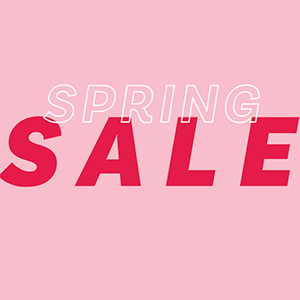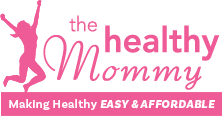INTERESTING! This many women opt for an EPIDURAL during labor – did you have one?
Chances are, you know of or you yourself requested an epidural during labor.
And it seems epidurals are becoming the most popular form of pain relief for women, as a recent study has found that 71% of women requested epidural anesthesia as pain relief while giving birth.

Study finds MAJORITY of women opt for an epidural during labor
Researchers at Stanford University examined the national epidural rates between 2009 to 2014.
They found that over 70% of women requested this type of pain relief while they were giving birth. In fact, epidurals have increased 10 per cent from 2008.

“We were blown away,” says study researcher Alexander Butwick, MD, an associate professor of anesthesiology.
“We were really surprised the rates were so high.”
“There’s a lot of misinformation available online that is more likely to suggest epidurals may not be great,” adds Alexander Butwick.
“And yet, here we are. The rates have gone up, for whatever reason. The goal is to better inform women, in general, about the effects of epidurals during labor… to help women make the best choice for themselves.”

What is an epidural?
Medical professionals injects local anaesthetic into the space around the spinal nerves in your lower back.
The anesthetic blocks the pain of labor and contractions.
The different types of pain relief and what you need to know about them
There are many options for pain relief available during birth.
We’ve got some information on the facts and the risks associated with all pain relief options for birth.

Natural non-medical pain relief choices
- Having a good support person- your partner, mother, friend, Doula – having emotional support can be a big help
- Physical touch/Massage
- Bath
- Birth pool*
- Shower
- Music (load your iPod with a mix of calming and distracting songs)
- Aromatherapy
- Hypno birth/ Calm birth
- Heat packs
- Acupuncture
- Being active, upright, walking, different positions
- Massage using a tennis ball
- Birth ball (same as an exercise ball)
Medical pain relief choices
1. TENS Machine
A tens machine is a small, battery operated device which is worn on the body. The box is attached to the body via wires with sticky pads on the ends, which are attached to the skin. Electrical pulses are transmitted to the body like little electrical shocks which help to ease pain in certain areas of the body.
Pros
- Self administered.
- No side effects to mum or baby.
- Easy to use with instruction.
- Drug free.
Cons
- Cost
- Need to be taught how to use.
- Can’t use in the bath/shower/pool.
2. Nitrous Oxide (gas)
Pros
- Don’t need a doctor’s order to start.
- Excellent for breathing and relaxation.
- Can be used in the bath/shower/pool.
- Portable.
- Harmless for baby (quickly leaves your body).
- Can be used at any time in the labor.
Cons
- Can take a few contractions to work and to get into a regular rhythm of breathing.
- Can cause dizziness, dry mouth and vomiting.

3. Morphine/ pethidine
(Depends on your hospital to which one they use).
Pros
- Lasts for 4 hours.
- Relieves pain by taking the edge off.
- Given quickly.
- Takes 20-30 min to work.
Cons
- Can cause nausea and vomiting.
- Can make you sleepy.
- Can cause respiratory problems in baby if given close to the birth.
- 2 doses can affect baby’s sucking reflex when born.
- It’s given via a needle so if you hate needles you might not like this.

4. Epidural
Analgesia that is administered via a catheter inserted into the epidural space.
Pros
- Takes away most of the pain (depending on the strength you can feel the pressure associated with birth).
- Some hospitals offer a patient controlled option where you press a button and administer your own dose.
- Allows you to sleep if you are tired and have laboured for a long time.
- If you have high blood pressure it can lower your blood pressure.
- Can be topped up if you require a c-section.
- Usually only needs a single injection after a local anaesthetic to numb the insertion site (which is on your lower back).
Cons
- 1 out of 20 don’t work.
- Requires a needle into the epidural space through your lower back.
- You have to wait for an anethetist to put it in.
- Takes a while to set up.
- You are confined to a bed.
- You will have constant monitoring – Blood Pressure (BP), Cardiotocograph (CTG),
- Indwelling catheter.
- IV therapy.
- Can cause a headache.
- May need a synthetic hormone to continue labor as it can stop or slow labor.
5. Remifentanyl*
Is an analgesic administered directly into a vein via patient controlled anaesthetic system (PCAS).
Pros
- Patient controlled.
- Can be used at any part of the labour.
- Still have the pushing sensation in second stage.
- Can still move around.
- Leaves your body quickly so minimal harm to the baby.
- Very effective.
Cons
- Not offered in all hospitals.
- Takes a little while to set up.
- Need a doctor’s order (Dr does not have to be present to set up).
- Will need monitoring.
- IV therapy.
- Oxygen therapy.
- Does pass to the baby but has a short life in the body.

6. Water injections*
The use of small amounts of sterile water inserted into the lower back under the skin. It is effective in 90% of women experiencing back pain in labour.
Pros
- Don’t need a doctor’s order to start.
- Nurse initiated.
- Can be repeated.
- Very effective on posterior labors.
- Drug free.
- Lasts 1-3 hours.
Cons
- Not offered in all hospitals.
- They sting for about 30 seconds.
- Need 4 small needles in the skin above your bottom (sometimes administered by 2 midwives).
* Not offered at all hospitals.




